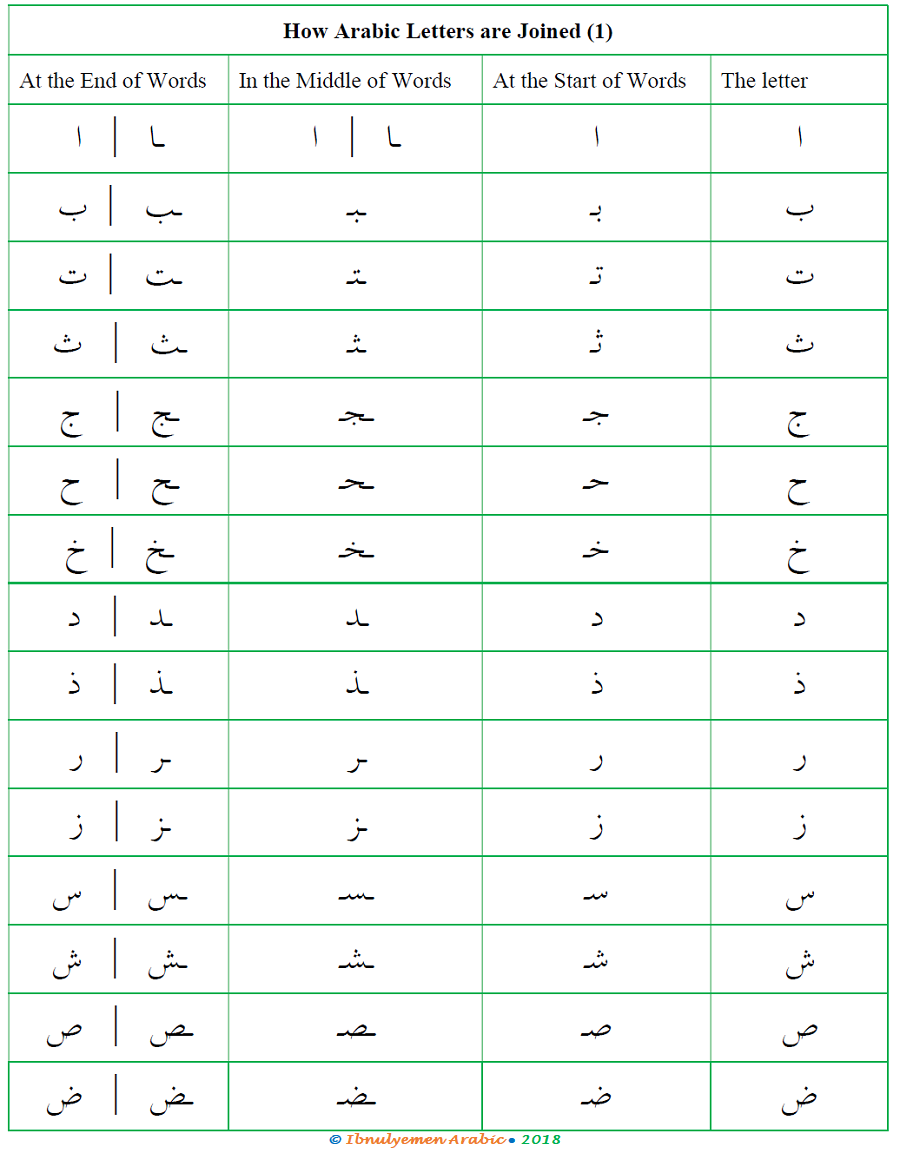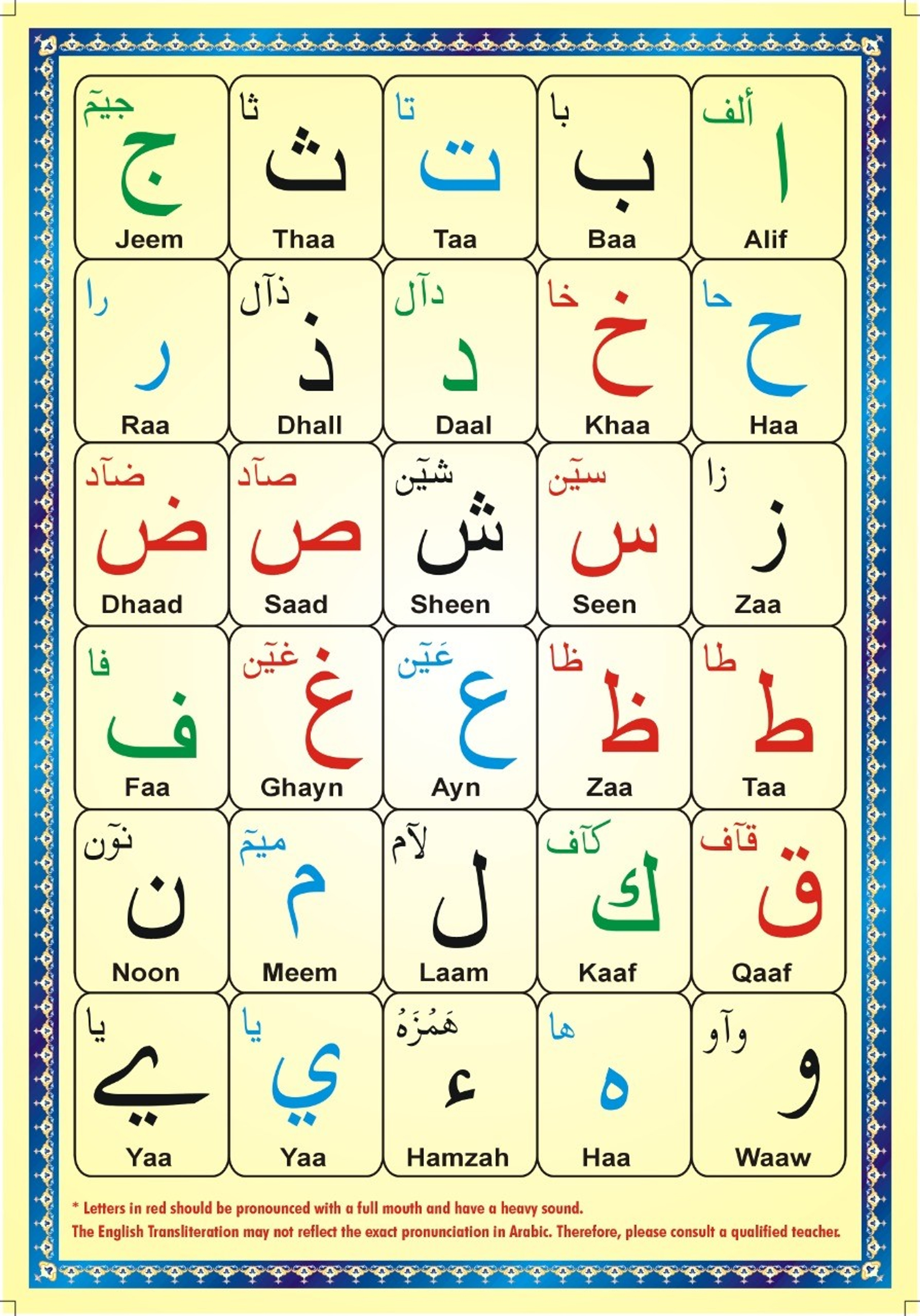
No equivalent, but similar to 'gh'/'gr', the sound made when gurgling No equivalent, but a guttural stop similar to the pause in uh-oh No equivalent, but emphatic 'D' similar to dawn from the back of the throat No equivalent, but soft h, as if you were blowing out a candle from the back of your throat. Thanks to this popular letter, Arabic is sometimes nicknamed “the language of Dhad”.īut don’t let this put you off! With instruction and practice, you can learn to pronounce Arabic well enough to communicate and be understood.Īrabic alphabet chart: the 28 letters, explained Letter nameī (The letter p doesn’t really exist in Arabic, so ‘p’ is also pronounced as ‘b’ by Arabic speakers.) One example is ض (Dhad), a widely used letter in Arabic that doesn’t exist in other languages. Some Arabic letters don’t have a direct equivalent sound in English, which can be challenging for English speakers. Vowels do exist in Arabic – but we’ll explain all about Arabic letter forms and vowels a bit later on! Why might Arabic letters sound weird to English native speakers? The Arabic alphabet, called Al-abjadiyah, has 28 letters.Īll 28 letters are consonants, and most letters have four different forms. So by learning the Arabic alphabet, you’ll build a reading base for other languages, as well! Arabic alphabet overview: 2 important questions, answered How many letters are there in the Arabic alphabet? Arabic letters change shape, depending on their placement in a wordīonus: it may surprise you to learn the Arabic characters make up the written alphabet for a bunch of different languages, including Persian, Malayalam, Urdu, Central Kurdish, Pashto, and Uyghur.
#Arabic letters series
Arabic letters are made up of a series of strokes and written in a cursive style.Arabic is written and read from right to left.Ultimately, learning to read in Arabic just means you need to ‘un-learn’ a few habits that are second nature to English speakers. It can be intimidating for English speakers because of the unfamiliar Arabic characters.īut here’s the good news: it’s a phonetic language that follows very consistent pronunciation rules. Reading and writing in Arabic with the Arabic alphabet isn’t as hard as it looks. But with this guide, it’ll be as easy as alif, baa, taa-that’s A, B, T, the first three letters of the Arabic alphabet! First off, what’s it like to learn the Arabic alphabet as a beginner?

Learning a whole new alphabet can be daunting for beginners. And you’ve come to the right place to learn all about it! In the next lesson, you will learn about the diacritics in Arabic, namely the short vowels and why they are not written in Modern Standard Arabic.If you’re curious about learning Arabic, the Arabic alphabet is a great place to start. This will help learn new linguistic term faster as they are introduced.

In the list below, you can see how the Arabic diacriticized letters are transliterated into English. Therefore, once you are able to read and write Arabic using its scripts, you must avoid using transliteration altogether. This certainly isn’t to encourage you to follow this path of learning, as it turns out to be a hindrance in later stages of learning since there isn’t a uniform system of using them in language books.

In the above table, you can see how the common sound-related terms covered in the first few lessons are transliterated into English. These sounds are roughly close to Arabic sounds. Some Arabic sounds does not exist in English, so a combination of English sounds is used. transliterating Arabic sounds into the corresponding English ones. This lesson presents the actual pronunciation of Arabic sounds in English sounds, i.e. It facilitates transition from the pure beginner stage to upper-beginner stage plus, it speeds up learning. In the initial stages of learning, using transliteration is inevitable and sometime useful.


 0 kommentar(er)
0 kommentar(er)
